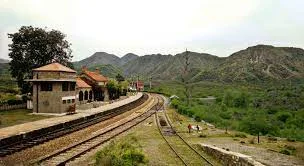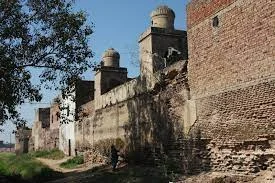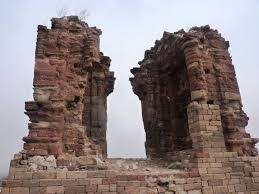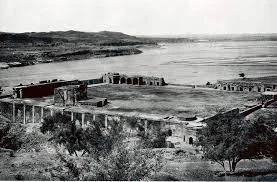Attock, Taxila and Begum Sarai
There is a long history associated with the place of Attock. Babar’s grandson, Emperor Akbar the Great, built the famous Attock Fort Complex in 1581 after realizing the area’s strategic importance. Following the fall of the Mughal Empire in the eighteenth century, Sikhs in Punjab and Durrani Afghans in the West gained prominence. Begum Sarai is also in the Attock District and has a rich history.
The structural remains of Taxila include temples and forts. Ancient Attock was the center of Buddhism. Gandhara was attacked by the people of surrounding areas on their horses and left them with nothing in their hands, they destroyed and burned the religious places, homes and the people of Gandhara were left with no choice but to leave their homeland to save their lives and the Attock city was deserted for years.

There are many options for tourism and historical places to visit in Attock city, there is Attock Fort, a Mughal era monument Behram ki Baradari, Attock Khurd Railway Station, Attock Tomb, Begum Serai, Kala Chitta Pahar, and many Temples and Gurudwaras.
Taxila is a world heritage and an important archaeological site in Pakistan containing the ruins of the Gandhara city of Takshashila. Taxila is situated 40 km to the west of Islamabad Capital Territory and northwest of Rawalpindi in Punjab (Pakistan) just off the GT Road.
It serves the views of the mountains of Hazara and Murree from the Northeast direction. The area of Taxila is surrounded by several small mountains, forming a natural barrier. The rivers and streams that flow from River Haro provide irrigation to the valley. These streams and rivers were once essential for fertilizing the land, and Taxila was known for its abundant water supply.
The prehistoric mound of Sarai Kala is the oldest settlement of Taxila which provides evidence of Neolithic, Bronze Age, and Iron Age occupation. The Bhir mound is the oldest historic city of Taxila, and it was most likely established in the 6th century BC by the Achaemenians.
INTRODUCTION

A castle-like building known as Begum Sarai, at the request of Queen Noor Jahan, Emperor Jahangir ordered to use this place as a temporary rest place for the royal family while traveling in the 7th century.
Begum Sarai is a tourist attraction place located in Attock District, Punjab, Pakistan.
LOCATION
Begum Sarai is situated before the river Sindh, on the left side of Grand Truck Road. Begum Sarai is the first stopping place towards the Punjab, this highway was the trade route, and it was built when the Attock Fort was under construction for the purpose of maintaining the fort, and creating an administrative system and engineering affairs, and looking after the fort.
STRUCTURE
In Begum Sarai’s yard, there are 332 square feet of rooms for people of the royal family to live in, and the towers were built at the four corners of the building to watch out for enemies. This building was used as a cantonment in the Mughal era by the army

The primary entry was via a gateway on the east, which has since vanished along with the majority of the compartments on that side. In the last years of the 19th century, semi-dressed stones were used to rebuild a large section of the current border wall and those of the arched chambers. This explains why the monument has both brick and stone architecture in various places.
The Begum Sarai occupies an area of approximately two-and-a-half acres. The courtyard is surrounded by independent cells. The structure is reinforced by a corner tower in which a suite of rooms with overlooking windows towards the river has been very efficiently inserted.
The structure is symmetrically placed in the courtyard, it is more like a Baradari. The building has two platforms on either side, the eastern and western. The eastern platform faces the main entrance to the Sarai and has six steps mounting to the platform. The western platform has no steps.
HISTORY
Hence, Caravanserais were essential along the whole length of the road so they were usually placed at a distance of twelve miles from each other. According to Pope, in Persia, this distance of twelve miles from each other.

According to the pope, in Persia, this distance was twenty miles. They comprised enclosures of various sizes, this one being on this route. Cells or rooms were placed along the inside of the perimeter, which was strongly walled to ward placed intruders, with a small verandah in front of each. Thus it formed an independent cubicle that afforded considerable privacy. In one corner a special apartment was built as a V.I.P suite for dignitaries. This usually faced the best view of the landscape.
The date of construction of Begum Sarai is not known as to who built it. There are of course several views, some have said that it was built by Noor Jahan, the celebrated wife of Jahangir, while others attribute it to the wife of Akbar. In any case, it is not clear from the historical data available to us as to who built it and when.
CONCLUSION
The monarchs made significant use of gardens to hold a wide variety of events. Sub-imperial gardens were created for a variety of purposes, including picnics, feasts, marriage ceremonies, get-togethers with friends, and strolls. From a utilitarian perspective, the gardens ranged from manzil or hunting gardens to residential, funeral, and pleasure gardens. They were constructed inside the neighborhoods.



13 Comments
JamesCledo
продать аккаунт безопасная сделка аккаунтов
WalterFlact
Account exchange https://buyaccountsmarketplace.com
ThomasGat
Account Exchange Service Buy and Sell Accounts
DonaldSab
secure account purchasing platform social media account marketplace
CarlosMar
secure account purchasing platform account marketplace
Stevenslace
buy pre-made account account sale
RandalOxilt
accounts marketplace guaranteed accounts
Raymondweiff
guaranteed accounts account trading platform
Geraldmox
account buying platform account exchange service
social-accounts-marketplaces.live_Cousy
account catalog account marketplace
social-accounts-marketplace.live_Cousy
account acquisition accounts market
accounts-marketplace.online_Cousy
account market https://accounts-marketplace.online
accounts-marketplace-best.pro_Cousy
account market https://accounts-marketplace-best.pro